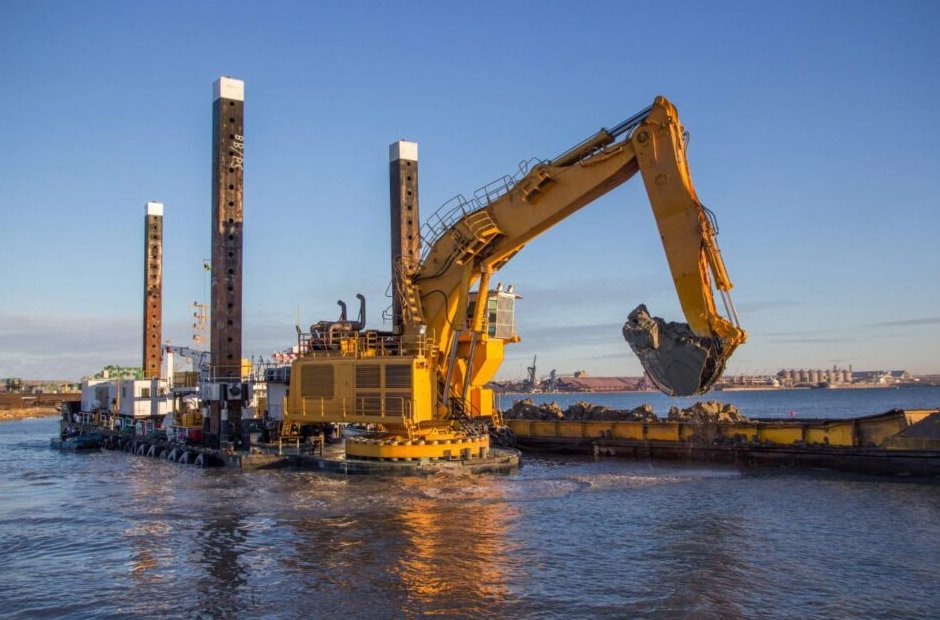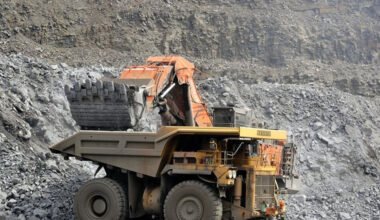Introduction to Dredging in Modern Infrastructure
Dredging is necessary for the construction and upkeep of international infrastructure. The need for efficient dredging solutions remains constant, encompassing a range of applications, from riverbed cleaning and harbor deepening to environmental restoration and land reclamation. However, the need for trained dredge machinery is greater than ever, as project demands increase in complexity, requiring deeper excavations, precise work, and operations in challenging conditions.
When given hazardous or particularly difficult tasks, traditional dredging machines frequently fail. In response, engineers have developed the latest dredging machinery, specifically designed to enhance the efficiency of dredging projects and address issues unique to the sector.
This article examines how specialized dredge machines are transforming the approach to complex dredging projects, delivering tailored performance, enhanced operational efficiency, and improved project outcomes.
The Role of Specialized Dredge Machines
Standard dredging circumstances cannot be handled by specialized dredging equipment, which is designed to handle extremely particular conditions. These devices, as opposed to one-size-fits-all machinery, are often part of specialized dredge systems that meet specific project requirements, such as sediment type, depth, environmental regulations, and operational scale.
Key characteristics of specialized dredging machines include:
- Enhanced power and cutting capabilities
- High precision dredging
- Modular design for flexible deployment
- Compatibility with remote or automated control systems
By investing in the right specialized equipment, project managers can significantly reduce downtime, boost safety, and increase overall dredging productivity.
Technological Advances in Modern Dredge Equipment
Over the last decade, the dredging industry has adopted technological advancements to meet the increasing complexity. Modern dredge technology integrates automation, remote sensing, and data analytics to deliver unprecedented levels of control and precision.
Among the most notable advancements are:
Hydraulic Dredging Machines
Because they are effective at moving enormous amounts of material, hydraulic dredging machines are increasingly being used. Especially in fluid sediments and environmental tasks, these machines operate more quickly than mechanical dredgers thanks to their strong suction and pumping systems.
Real-Time Monitoring and GPS Integration
Modern dredging systems now include GPS, sonar mapping, and real-time data analytics to guide operations. This ensures precision, avoids over-dredging, and efficiently meets regulatory guidelines.
Remote and Automated Control Systems
Some high-performance dredge equipment is now operable via remote control, enhancing safety in hazardous environments and reducing the need for large onboard crews.
Key Components of High-Performance Dredge Equipment
Understanding the critical components of high-performance dredge equipment provides insight into what makes these machines uniquely suited to complex projects. The following elements contribute to operational superiority:
- Cutterheads: Designed to break through various material types, from soft silt to compacted clay.
- Dredge Pumps: High-capacity pumps ensure consistent material flow over long distances.
- Winches and Spud Systems: Facilitate precise positioning and movement, essential for projects in constrained or sensitive areas.
- Power Systems: Energy-efficient engines and electric drive options help reduce fuel costs and environmental impact.
Below is a comparison of features between standard and specialized dredging machines:
| Feature | Standard Dredge Machines | Specialized Dredge Machines |
| Operational Depth | Limited | Deep and variable |
| Material Handling | General-purpose | Optimized for specific sediment types |
| Automation Integration | Basic or manual | Full automation and remote operation |
| Efficiency in Complex Projects | Moderate | High |
| Customization Options | Minimal | Fully customizable |
Customized Dredge Systems for Unique Project Needs
One of the most significant advantages of using customized dredge systems is their ability to align precisely with project requirements. No two dredging projects are the same, especially when dealing with environmental factors, regulatory constraints, and access challenges.
Customized solutions may include:
- Adjustable cutterheads for variable material density
- Modular barge-mounted systems for remote access sites
- Noise-reduction technologies for urban or ecologically sensitive areas
- Portable units for narrow waterways or small-scale operations
These tailored features enable better performance in non-standard operating environments, supporting applications ranging from coastal erosion control to the removal of mine tailings.
Boosting Dredging Project Efficiency with the Right Equipment
Selecting the right dredging equipment has a direct impact on project timelines, costs, and environmental compliance. With specialized dredge machines, contractors can optimize workflow and avoid common inefficiencies such as rework, over-excavation, and mechanical failure.
Here’s how specialized equipment improves dredging project efficiency:
- Minimized Downtime: Built-in redundancies and durable components extend operation between maintenance cycles.
- Faster Cycle Times: Higher throughput reduces the time required to move a given volume of material.
- Improved Accuracy: Advanced controls reduce errors, preventing over-dredging or underperformance.
- Environmental Compliance: Real-time monitoring ensures compliance with environmental regulations during operations.
Efficiency metrics positively impacted by specialized dredge machines include:
- Fuel consumption per cubic meter of sediment removed
- Hours of operation per maintenance interval
- Manpower required per shift
- Cost per linear meter of channel dredged
By incorporating high-performance dredge equipment, organizations can deliver projects on time and within budget while meeting strict performance standards.
Applications Across Industries
The versatility of specialized dredge machines makes them applicable across a wide range of industries and operational environments.
Environmental Remediation
Specialized dredging equipment is used to remove contaminated sediments from lakes, rivers, and industrial ponds. The precision of these machines minimizes ecological disruption.
Port and Harbor Maintenance
Deep-draft vessels and increasing cargo volumes necessitate that ports maintain greater depths. Customized solutions allow ports to execute maintenance with minimal disruption to operations.
Mining and Land Reclamation
Dredging in mining is essential for extracting valuable materials and managing tailings. High-performance equipment is crucial for handling abrasive materials efficiently, thereby extending the machine’s lifespan.
The table below highlights some typical applications and the corresponding dredging solutions:
| Industry Sector | Application | Recommended Equipment Type |
| Marine Infrastructure | Channel deepening, berth expansion | Cutter suction dredgers, hydraulic systems |
| Environmental Management | Sediment remediation, wetland repair | Precision hydraulic dredgers |
| Mining Operations | Mineral extraction, tailings removal | Heavy-duty mechanical dredgers |
| Urban Development | Land reclamation, waterway widening | Modular, portable dredging systems |
Conclusion: Why Specialization Matters in Dredging Today
As the size and complexity of dredging projects expand, the limitations of traditional equipment become more evident. The demand for specialized dredge machines is not a luxury; it is required for any project that seeks efficiency, accuracy, and long-term success.
From custom dredge systems fitted to specific conditions to current dredge technology that incorporates automation and real-time monitoring, the future of dredging rests in smart, flexible, and high-performing solutions.
Whether you’re maintaining a harbor, restoring a riverbank, or undertaking industrial-scale excavation, selecting the right dredging equipment for complex projects ensures that your investment yields the best results, both safely and sustainably.



